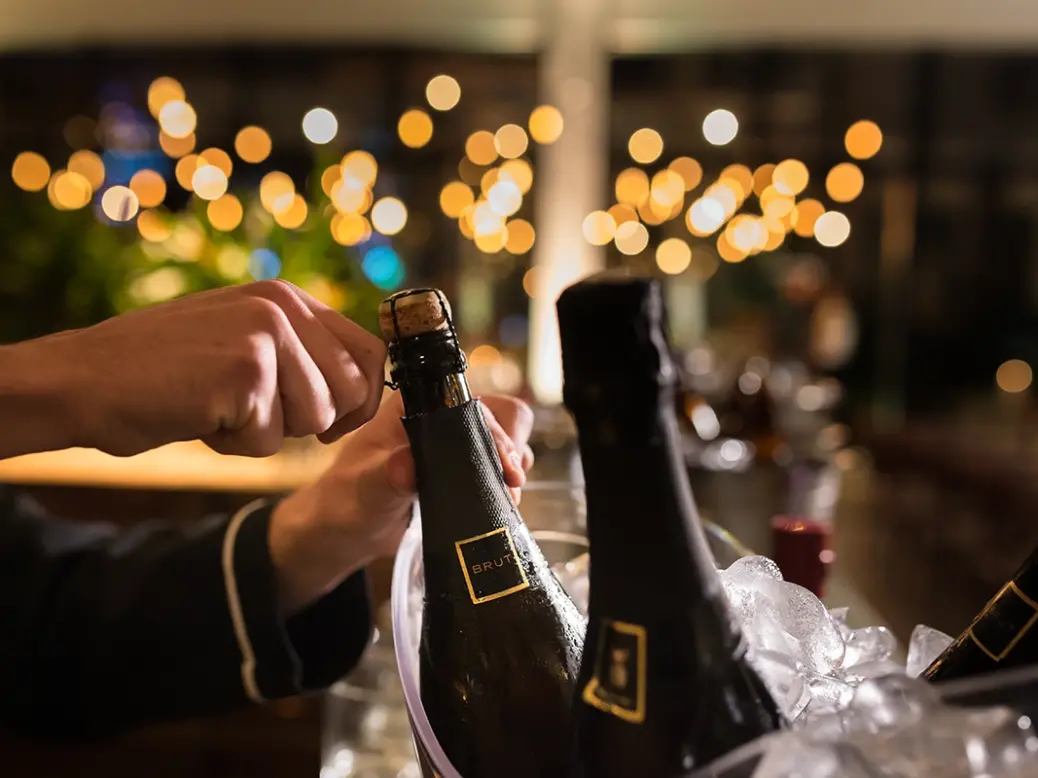
Some sparkling-wine tasters believe there is a significant difference between brut nature and brut—but there isn’t, and this misconception can lead to ill-defined judgments, something that has tripped me up in the past.
Whether you are old enough to remember when a brut could contain up to 15g of sugar per liter, or young enough to realize that it cannot contain more than 12g/l, you should be wise enough to understand that nothing has really changed. When EC607/2009 was introduced on July 14, 2009, it was sold to the wine press that lowering the dosage was a reaction to global warming, but this conveniently ignored the fact that the new law included a 3g margin of error that was not present in the old regulations—thus 12g plus three equals 15g, representing no difference whatsoever.
As for brut nature and extra-brut, they were and still are 0–3g/l and 0–6g/l respectively, making a massive difference when taking into account the 3g margin of error. Extra-brut has effectively increased to 0–9g, while brut nature has essentially doubled to 0–6g, though it must still be without any sugar-added dosage. There are ways to achieve 6g without adding a dosage, though I doubt that anyone would bother.
Further confusion sets in when it comes to describing these wines in an article or on a wine list, because the data supplied by producers will vary between residual sugar (which is the dosage plus any residual sugar that might be remaining in the wine prior to adding the dosage) and the dosage itself (which is what producers usually communicate about). Although most producers instinctively provide details of the dosage, when asked for residual sugar, some do indicate the true residual sugar. The dosage by itself is a fairly useless piece of information, which is why the entry form for the Champagne & Sparkling World Wine Championships (CSWWC) requests residual sugar, and we add the following explanatory note: “This is the residual sugar after the dosage has been added.” Even so, the accuracy of information received we currently estimate to be about 75 percent: not precise, but a lot more useful than relying on the simplicity of dosage, to which we might add 0.5g or 2g, depending on the wine in question.
All about balance
When the CSWWC started (2014), we used to judge brut nature in its own category, but we were not convinced that this worked well, so we stopped. Tasting blind by origin and style is the gold standard for medaling in any well-run wine competition, and we do taste by different sweetness category. But whereas it makes total sense to taste brut wines separate from sweeter styles, fractionalizing the brut style into brut nature, extra-brut, and brut serves no useful purpose. Judging brut nature in its own category can lead tasters to make allowances for the lack of dosage. The brut nature designation should never be used as an excuse for an austere mouthfeel.
The late Dr Tony Jordan suggested that we taste all three subdivisions of brut together in random order of sweetness. As he pointed out, they are all technically brut. Brut nature and extra-brut can each be labeled brut; it is a matter of choice for the producer, and there is, in any case, a considerable overlap in the residual-sugar requirement.
The question of dosage should have nothing to do with sweetness per se. It’s all about balance. The use of either sweetness or austerity as a descriptor for any subdivision of brut should be equally negative, whatever the label states. That is not to say that some wines with these descriptors cannot win a medal at the CSWC, but they won’t be at the top of their game. And though dosage is all about balance, there are many other quality attributes to a great sparkling wine that need to be considered, so a weakness in balance might not gain the top spot, but it can be made up for if there are sufficient strengths elsewhere.
We have followed Tony’s suggestion for eight years now, and I can confidently state that by focusing on balance rather than sweetness, any brut nature that manages to stand out against the greatest brut wines of a given region must be truly exceptional.
On the grapevine
• I hear that Diam has stopped production of its Mytik Revtech (see WFW 64, p.72). The sooner it is gone, the better, in my opinion, because it continues to harm the carefully crafted reputation of Mytik Diamant. Only at the drawing-board stage and a long way off given the green light for production, is a new Diam product that will see the TCA and other bad aromas removed from the supercritical mass before reimpregnating Mytik corks with the good aromas only! Sounds fascinating and might attract some producers who like Mytik for the consistent OTR of these closures but want to benefit from the aromas of natural cork.
• Belinda Kemp PhD, principal scientist at CCOVI, Brock University, Ontario, is the single most sparkling-wine-driven academic on the planet, so I was pleased to hear (but sad for CCOVI) that she has left Canada to return home to the UK, where she will be group leader at the brand-new, state-of-the-art Viticulture, Oenology Research & Wine Innovation Centre at NIAB East Malling.
• One of Belinda’s postgrads also specializing in sparkling-wine science is Hannah May Charnock, who has already made a name for herself researching Maillard reaction. Belinda told me that Hannah has other Maillard papers due out soon, including one that names the two amino acids that are responsible for these reactions. I can’t wait!






